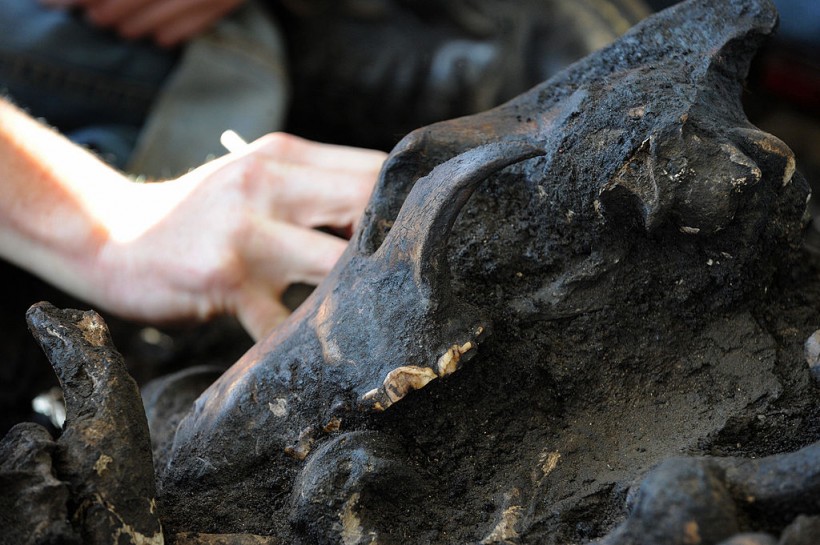
(Photo : ROBYN BECK/AFP via Getty Images)
An excavator digs around a skull of an Ice Age dire wolf as she works on "Project 23," after a press conference to announce the discovery, in Los Angeles on February 18, 2009. The highlight of the find is a mostly intact Columbian Mammoth fossil which scientists have nicknamed "Zed." Zed and the rest of the fossil-rich earth and asphalt of Project 23 was uncovered two years ago by working digging an underground parking garage.
Scientists found an ancient wolf head while digging for mammoth tusks but discovered it instead. This find was one of the most prized relics when ice covered the Earth during the Ice Age.
The Ice Age was when countless beasts lived on the eternal winter landscapes until the Earth warmed up a bit. Animals like the steppe wolf were instantly flash-frozen in the sub-zero temperatures in the environment then.
Melting permafrost reveals preserved wolf head
The permafrost in modern-day Siberia is an unforgiving environment few animals can survive. During the last Ice Age, mammals like giant mammoths, rhinos, and the modern ancestor wolves, the Steppe Wolf, reported the Express UK.
A quarter of the world's best Ice Age specialists journeyed to the Yakutia region in Russia's far east in quest of the ancient beasts.
Temperatures are already warm enough in the summertime to melt the glacial soil, exposing the corpses of beasts that once inhabited the territory. Freezing sub-zero cold in the winter world had kept the remains pristine for 32,000 years after it died.
The discoveries by the scientists were shown in a 2020 documentary that featured lost long-dead animals of the Ice Age. This particular find was discovered by a Tusk Hunter who was at the Belaya Gora base camp with a package, and it was described as something unique as it revealed.
Professor Dan Fisher of the University of Michigan said the wolf head was the most eccentric find that made researchers curious about it. One of the comments is how preserved the ancient wolf head was so good that it does not look like it died thousands of years ago.
Most specimens in such a pristine state could only come from the most timeless permafrost layer, an interesting oddity from Earth's last Frozen Era.
How the wolf head was severed remains a mystery
According to Fisher, the wolf head was in perfect condition. Even the small hump on its mouth remained present, precisely as it would be as it was breathing and alive.
The huge head was two feet long, with the neck included in the measure. Furthermore, the other body parts, skin, fur, and even the tongue were still there in the flash-frozen remains. The estimated age of the animal is from two to four years old.
The researchers speculate that it might be close to a modern wolf or the long-dead Steppe Wolf, the same as the dire wolf that died out a long time ago, noted the Scientific American.
The dire wolf lived in the last Ice Age, a quarter size bigger than today's grey wolf, and had the most powerful bite of any canid that existed.
Scientists can identify what kind of wolf it is once it has been sent out for examination. It is estimated to take at least another year when it's done.
Should it be a steppe wolf, it will be a one-of-a-kind specimen. But how the head got severed is a mystery. Several experts are trying to solve the problem with several theories.
Finding the ancient wolf head is important to a researcher of ancient mammals of the Ice Age, it gives more clues to extinct animals than other discoveries to come!
Related Article: 28,000 Years Old Cave Lion Cub Found Perfectly Preserved in Permafrost in Siberia








